#sons2024: The winners of the European STEM Teacher Awards
The 13th European Science on Stage festival is over. More than 450 STEM teachers from 35 countries participated and presented their innovative ideas to their international colleagues. The seven best projects were awarded with the European STEM Teacher award during the award ceremony. Learn more about the winning projects here:
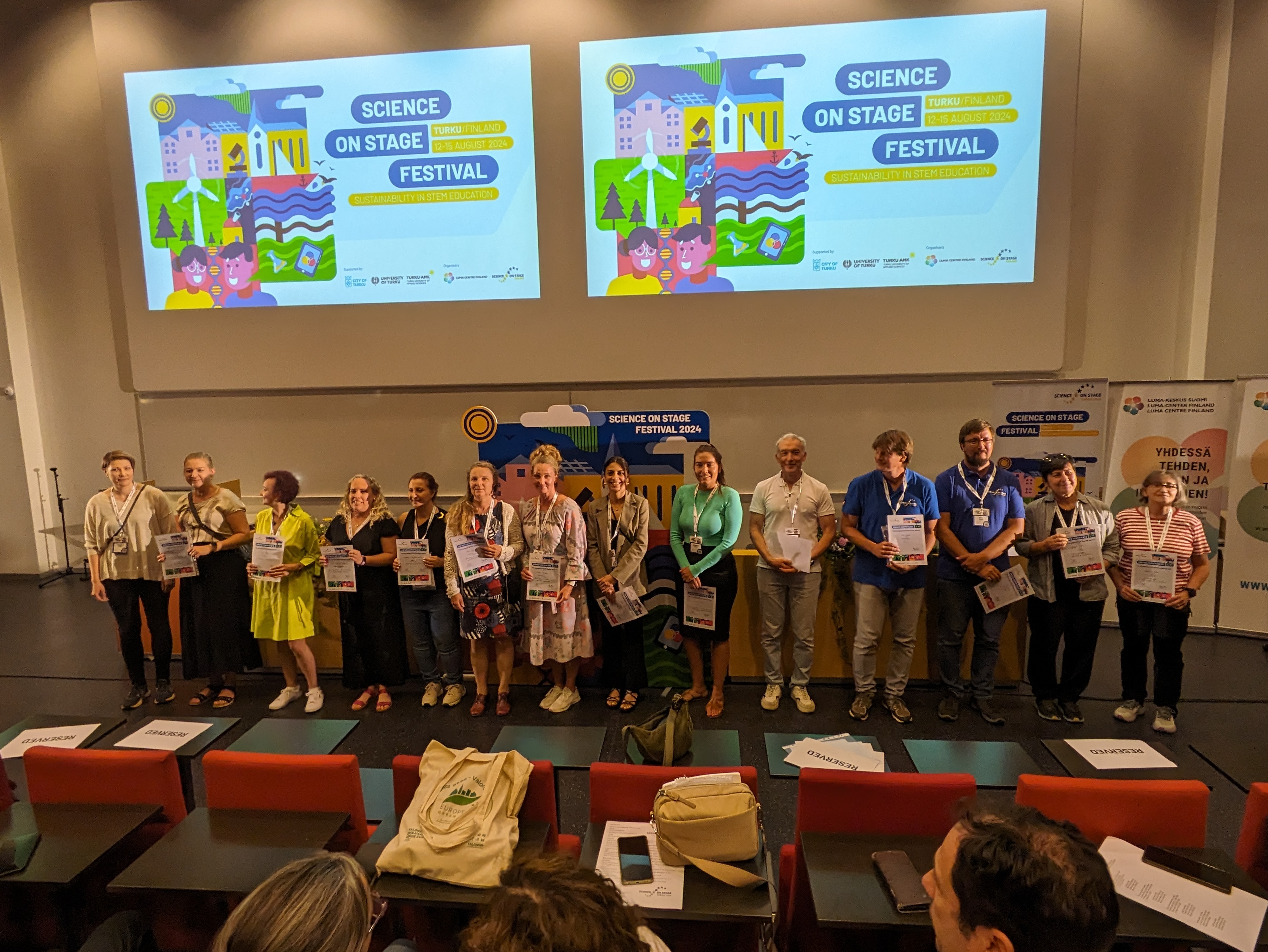
Teaching details of proteins' structure in 3D
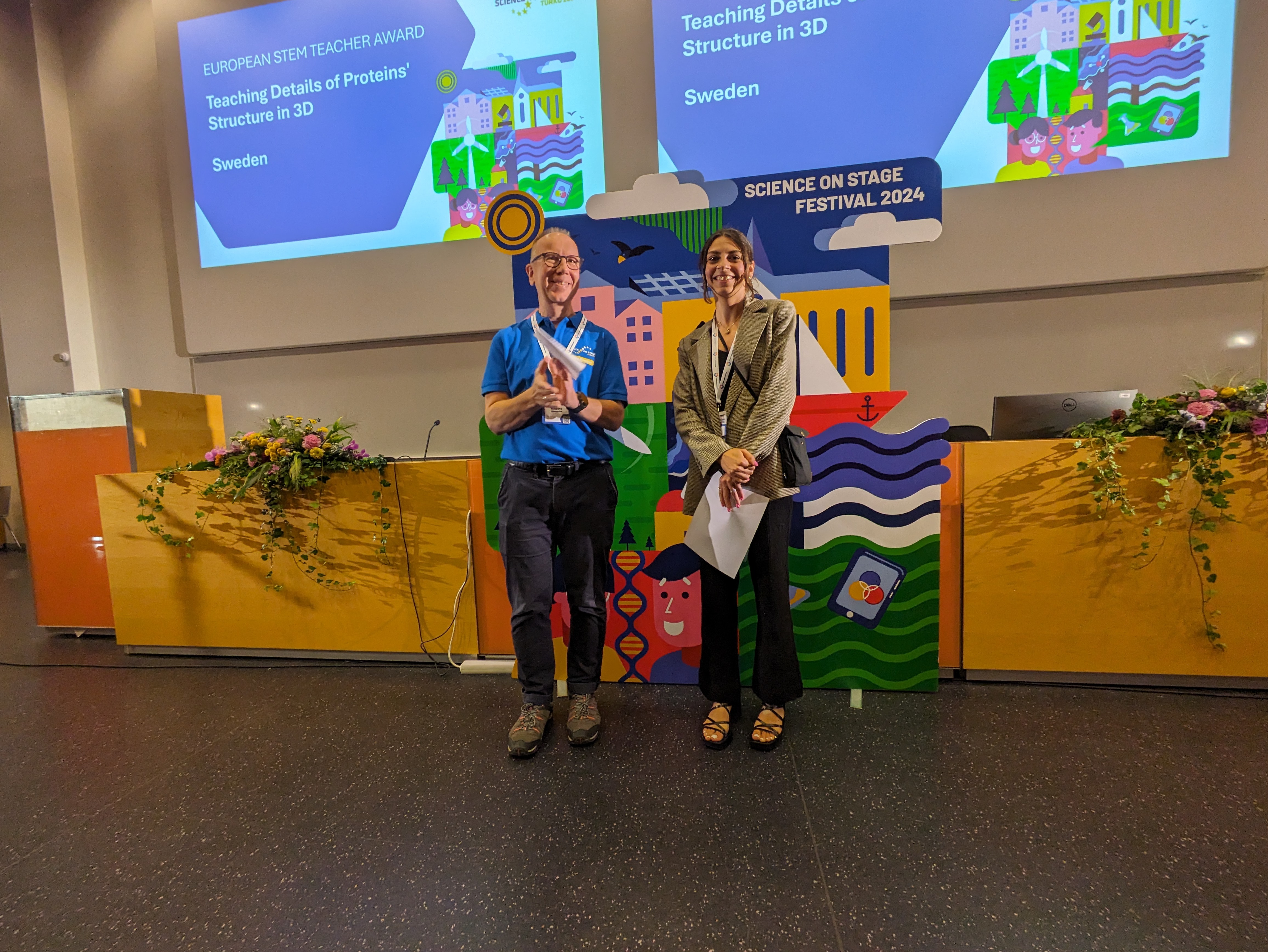
Building models is a great way to understand tricky biochemistry concepts. In my project, we focus on proteins, crucial for cell processes. We use a handmade 3D model representing pepsin´s (a stomach enzyme that breaks down proteins) working mechanism. The model helps discuss protein structure, folding, interactions, proenzyme activation, and amino acid properties. We also talk about inhibitors, in particular allosteric inhibitors. After these talks, students use an online tool (PDB) to explore a crystalized pepsin structure before and after activation, and with and without substrate-binding. This digital activity adds complexity, showing students the importance of chemical bonds in making proteins work.
Developed by: Muna Amanuel, Sweden.
Go to the project poster
Ötzi
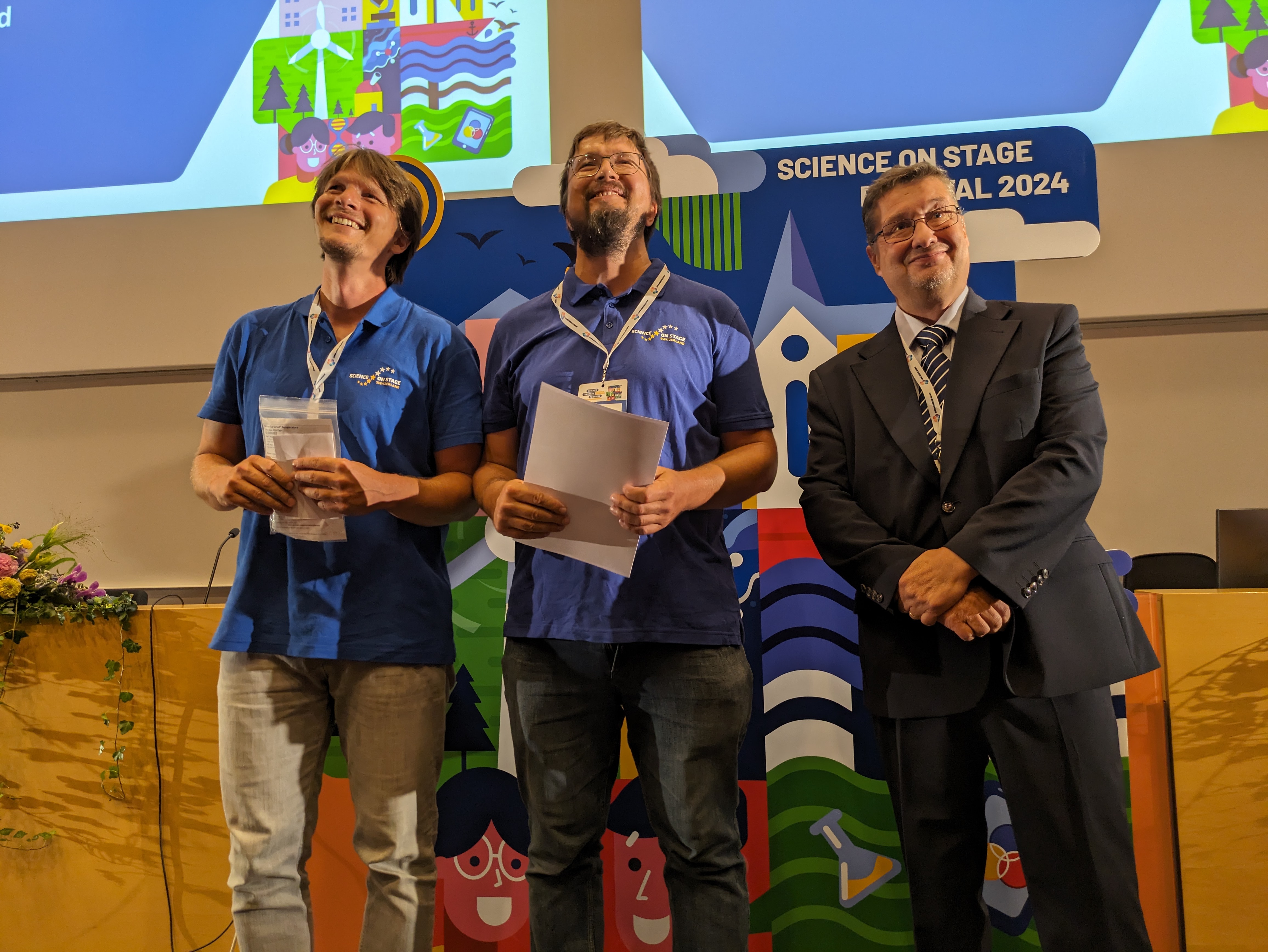
Our school project, 'Ötzi', immerses students in the Stone Age to understand its life and culture. Through experimental archaeology, students engage in creating and using tools and weapons. Using the engineering method, they aimed to upgrade old technology with modern materials. Clothing is tested in adverse conditions like rain and snow, deepening comprehension of the era and creating memorable experiences. The goal is to enhance Stone Age technology and present results creatively. A captivating and educational project bringing history to life. Additionally, we crafted a comprehensive equipment set modelled after Ötzi, testing it during Alps hikes for practical insights.
Developed by: Felix Speerli & Reto Speerli, Switzerland
Go to the project poster
A cup of coffee: coffee waste as fertilizer
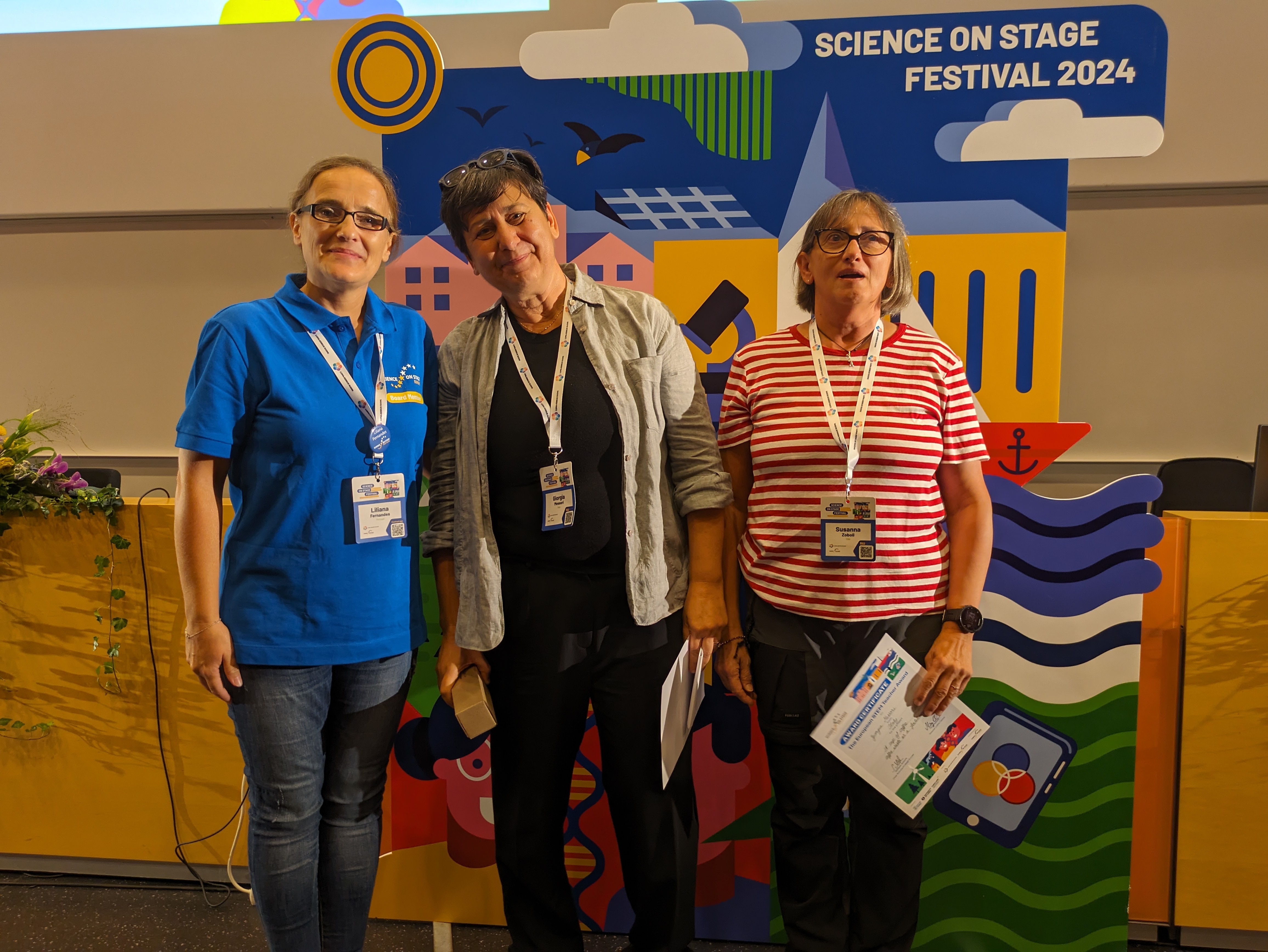
A simple question about what happened to the coffee grounds from the school bar sparked the pupils' curiosity to understand how 4R's rule (reduction, reuse, recycling, energy recovery) could be applied to this waste. After collecting coffee waste on a daily basis, we began to analyse it and look for ways to enhance and use it as fertiliser. The 'coffee' project involved several students in two different classes and the research developed along two main lines: The analytical study of the nutrient content of the waste to be reused as fertiliser and the design of the plant, an anaerobic bio-digester producing gas and pellets and the extraction of the coffee oils and their characterisation.
Developed by: Susanna Zoboli & Giorgia Messori, Italy
Go to the project poster
Acid rain, is it pain?
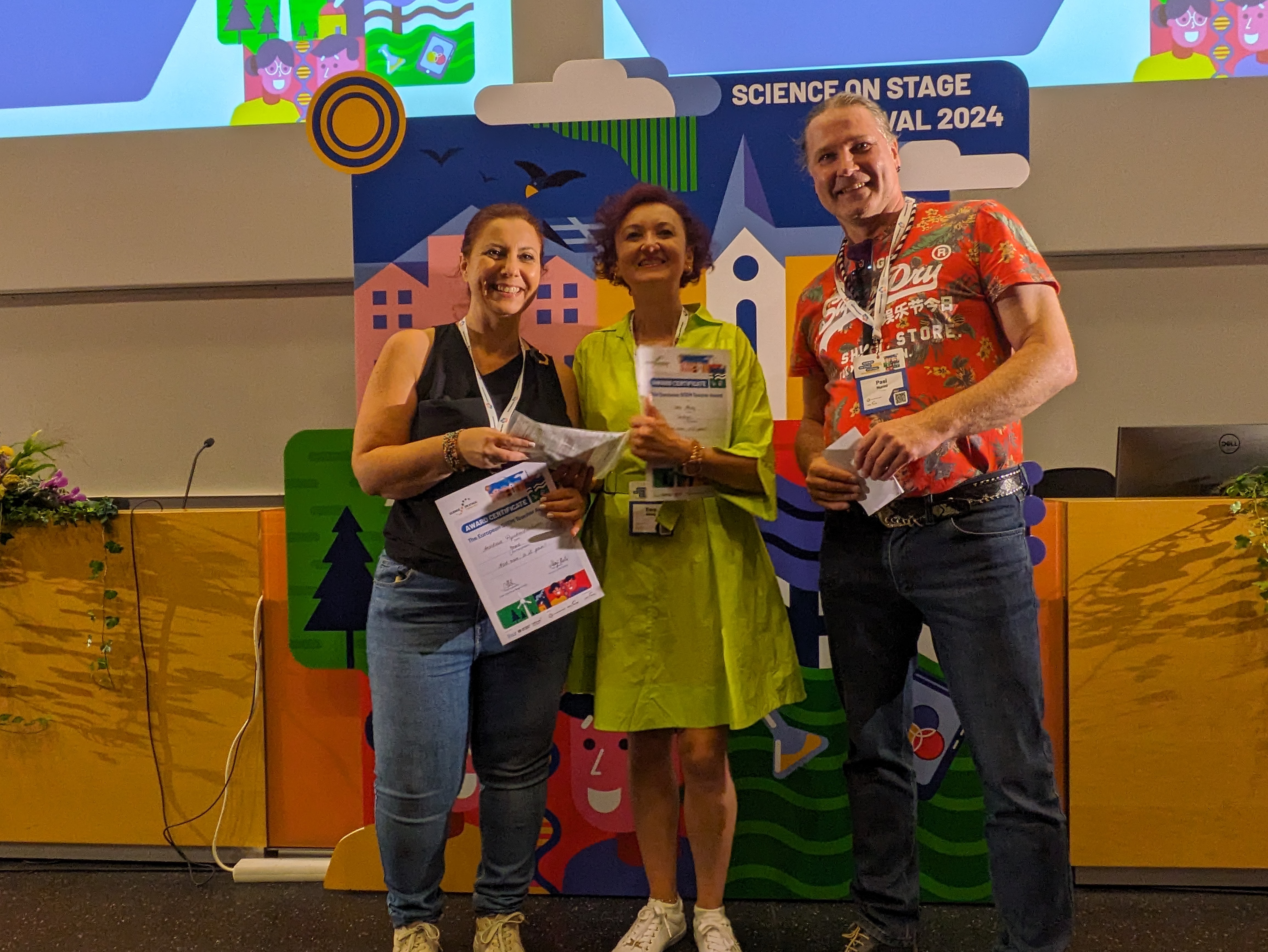
Acid rain is used to refer to rain containing acidic substances resulting in a lower pH. Studies have shown its effects on different materials and on living terrestrial and aquatic organisms. These effects are detected through experiments that are easy to implement in the classroom, tailored for primary and early secondary education. Students observe acid rain effects on aquatic organisms using an aquarium that imitates the production of acid rain and on plants and soil using a self-sustaining terrarium, all built by themselves. Providing teachers low-cost experiments with step-by-step video tutorials helps them to address global environmental problems and promote inquiry-based learning.
Developed by: Anastasia Papakonstantinou & Esra Aksoy, Greece & Türkiye (Joint project)
Go to the project poster
Replacing Plastics: An investigation into creating natural polymers
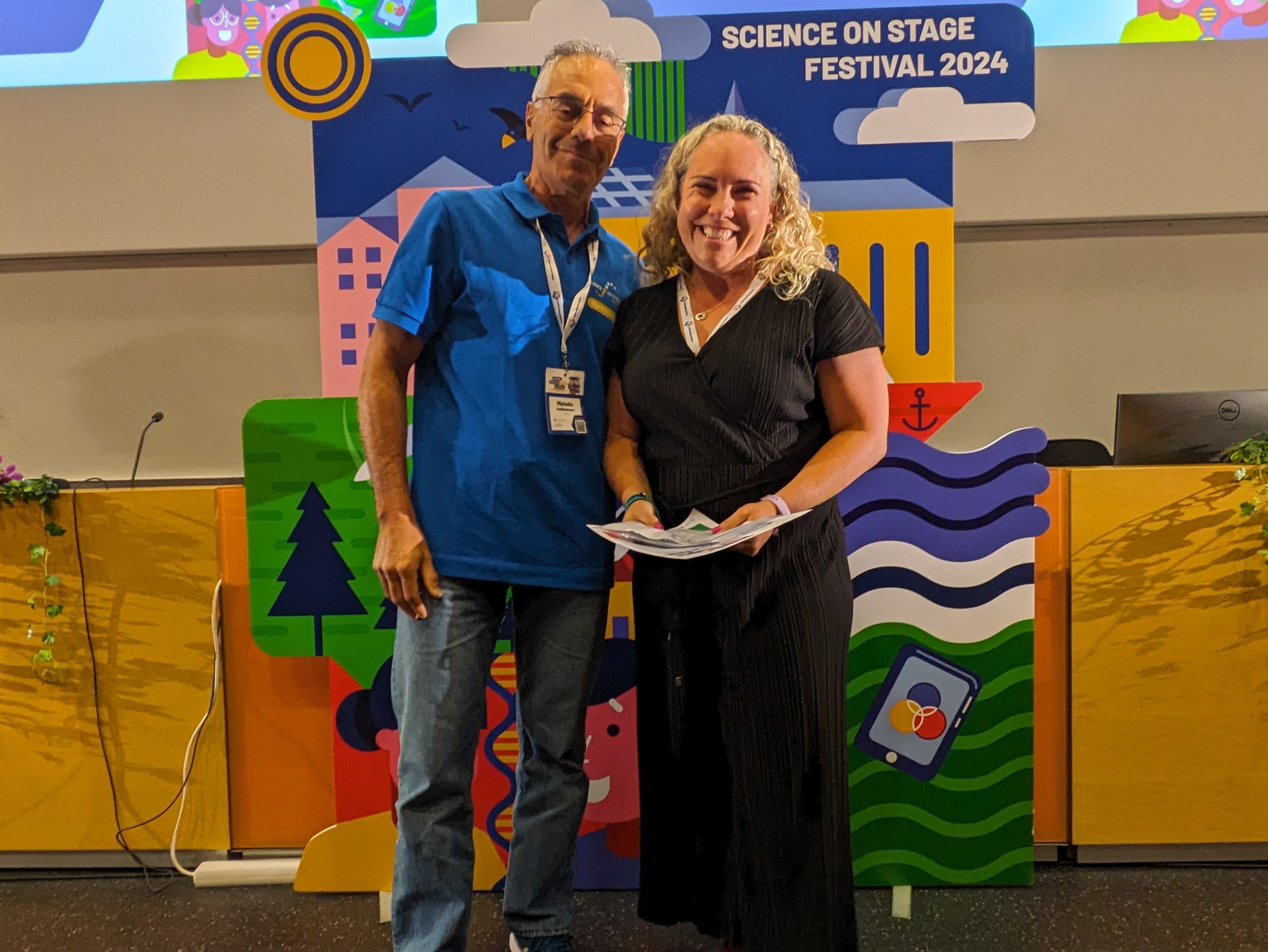
This project outlines an activity in which students create a natural polymer substance that resembles plastic. Whereas plastics are made from crude oil, this polymer is synthesised from milk using readily available materials and techniques. Replacing plastics is a key to sustainable consumption and production of everyday materials, which is the United Nations' Sustainable Development Goal 12. The product, mould-casted polymer objects, can be compared against regular plastics and used to incite discussion about the nature and role of plastics in our society.
Developed by: Colleen Reesink-Wells, United Kingdom
Go to the project poster
The birth of the magnetic universe by a flying ostrich!- Using children's literature to explore magnetism.
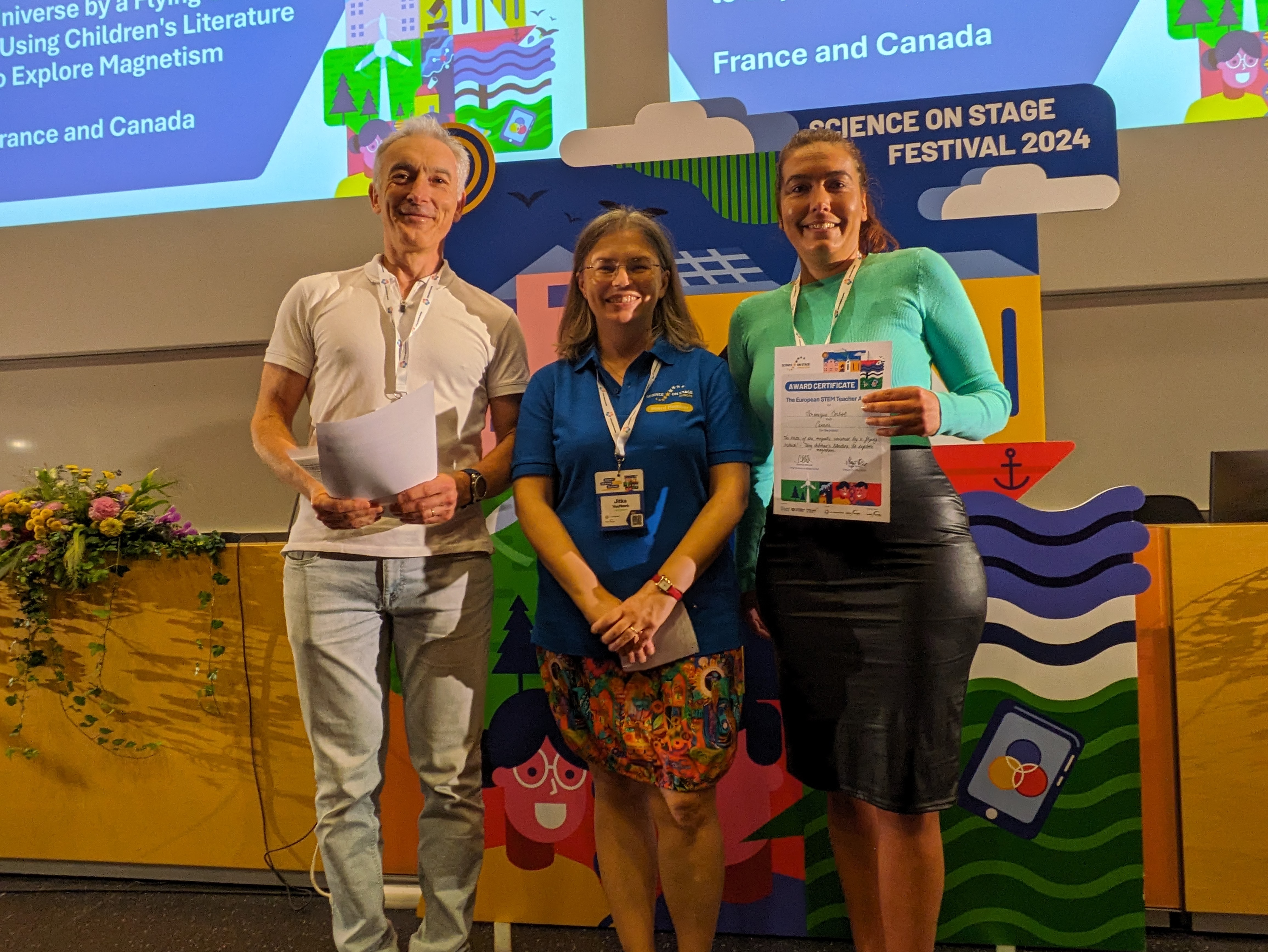
Two countries, one learning community! Here is a winning strategy to evolve collective knowledge while advancing individual knowledge about magnetism from one country to another. Aged between 5 and 18, students will share their discoveries using the scientific method just like real researchers. A place for children's literature is given in order to better understand scientific concepts for the youngest, or quite simply to launch the production of a prototype (humour guaranteed). This community of learners will be at the heart of authentic learning situations while immersed in an interdisciplinary environment.
Developed by: Jean-Brice Meyer & Veronique Corbeil, France & Canada (Joint Project)
Go to the project poster
How long is a second and other timestudies
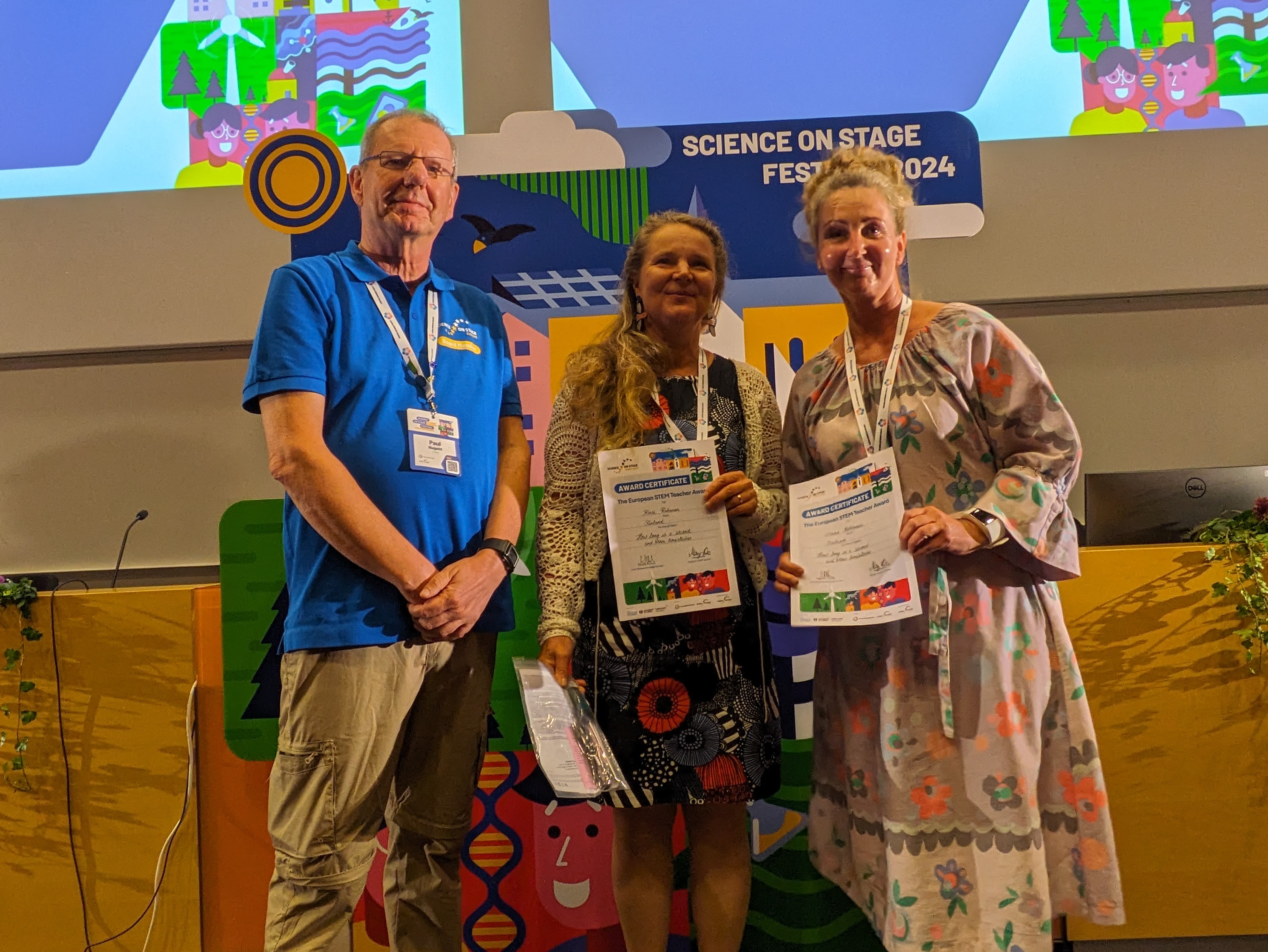
The goal of the project was to investigate time, time-related concepts, and the manifestation of time in various situations in children’s everyday lives. “How long does it take for a ball to fall? How quickly can toys be cleaned up? How fast can we run from one end of the hall to the other? How long does the longest slide on the slide take? How quickly does a snowman melt in a glass jar brought inside?” We realized the core principles of project work while studying time, and children worked together to build knowledge through various experimental and functional tasks. The phenomenon of time required a lot of innovative approaches and concreteness.
Developed by: Kirsi Rehunen & Sanna Kolhonen, Finland
Go to the project poster
Share this page